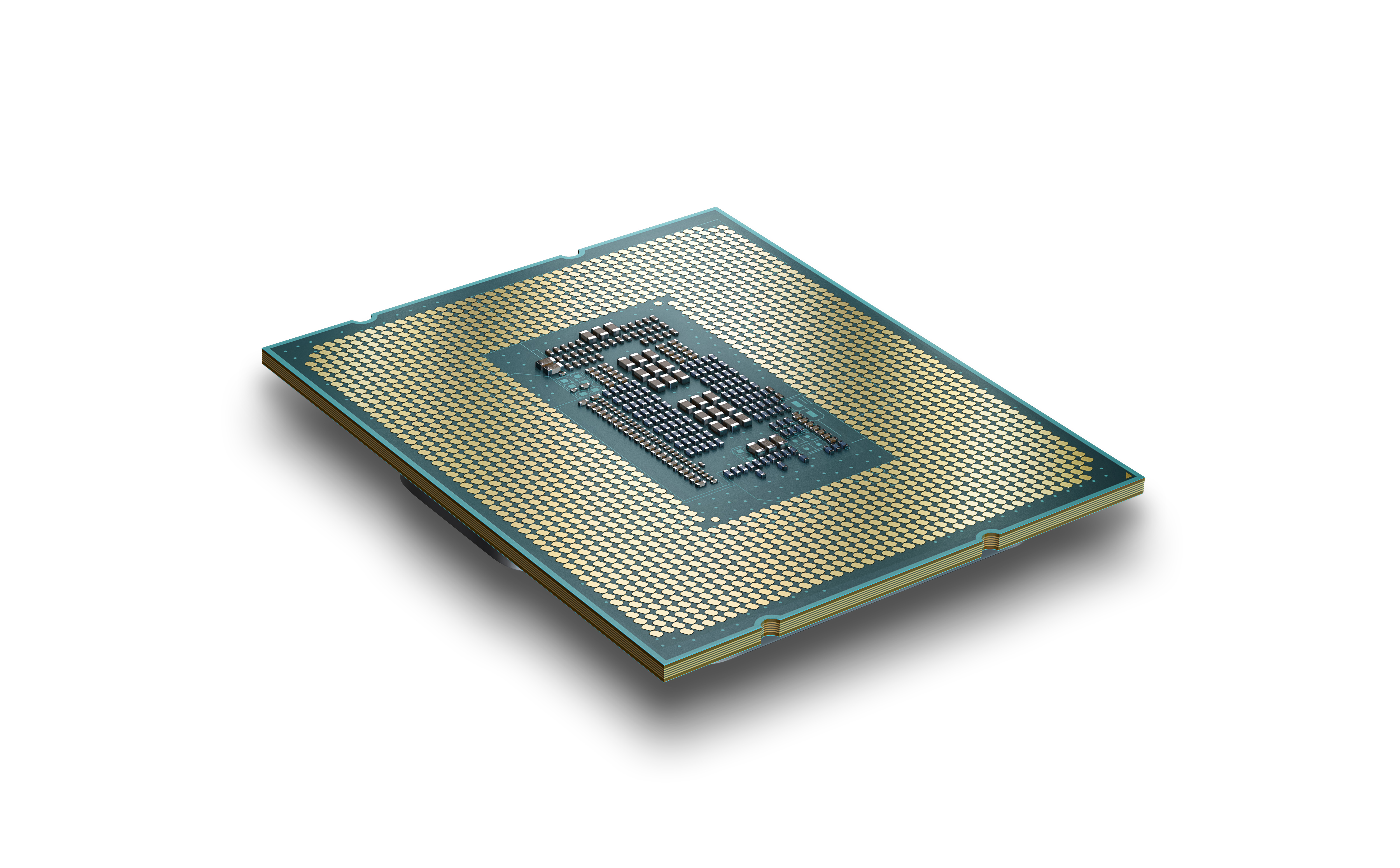After months of leaks and speculation, Intel has officially announced its 13th generation Intel Core desktop processors, and given us (and its rival AMD) a glimpse of what to expect.
Formerly known as ‘Raptor Lake’, Intel’s 13th generation of processors will once again make use of Intel’s hybrid design, with a mix of Performance-cores and Efficient-cores, which cleverly kick in, depending on what sort of task you’re using the CPU for, with Intel Turbo Boost Max 3.0 helping to identify the best performing Performance-cores (P-Cores).
Intel’s previous 12th generation of 'Alder Lake' CPUs also used this design, but the company claims this new generation will benefit from more Efficient-cores (E-Cores), that allow for more Intel Smart Cache (L3) for improved performance, especially with large data sets, and L2 cache has been increased to speed up data transfers between cache and memory. This, again, could lead to improved performance.
The specs
Intel 13th gen Core CPUs will support up to 16 PCIe 5.0 lanes, and will support DDR5 memory up to 5600 MT/s. Unlike rival AMD, which is only supporting the new RAM standard on its new Ryzen 7000 chips, Intel 13th gen processors will continue to support DDR4 RAM.
Integrated Intel UHD Xe graphics will support up to 8K at 60Hz, or up to four 4K screens at 60Hz, and there will also be integrated Wi-Fi support for Wi-Fi 6 and the newer Wi-Fi 6E standards.
The flagship Intel Core i9 chips will come with 24 processor cores made up of eight P-cores and 16 E-cores, with the i7 chips will come with 16 cores (eight P-cores and eight E-cores), and the i5 chips will come with 14 cores (six P-cores and eight E-cores).
See the below table for the full specs:
| Intel Core i9K and i9KF | Intel Core i7K and i7KF | Intel Core i5K and i5KF | |
|---|---|---|---|
| Max Turbo Frequency [GHz] | Up to 5.8 | Up to 5.4 | Up to 5.1 |
| Intel Turbo Boost Max Technology 3.0 Frequency [GHz] | Up to 5.7 | Up to 5.4 | n/a |
| Performance-core Max Turbo Frequency [GHz] | Up to 5.4 | Up to 5.3 | Up to 5.1 |
| Efficient-core Max Turbo Frequency [GHz] | Up to 4.3 | Up to 4.2 | Up to 3.9 |
| Performance-core Base Frequency [GHz] | 3.0 | 3.4 | 3.5 |
| Efficient-core Base Frequency [GHz] | 2.2 | 2.5 | 2.6 |
| Processor Cores (P-cores + E-cores) | 24 (8P+16E) | 16 (8P+8E) | 14 (6P+8E) |
| Total Processor Threads | 32 | 24 | 20 |
| Intel Smart Cache (L3) Size [MB] | 36 MB | 30 MB | 24 MB |
| Total L2 Cache Size [MB] | 32 MB | 24 MB | 20 MB |
| Enhanced Intel UHD Graphics driven by Xe Architecture | i9K: Intel UHD Graphics 770 i9KF: no | i7K: Intel UHD Graphics 770 i7KF: no | i5K: Intel UHD Graphics 770 i5KF: no |
Analysis: The pressure is on Intel

The 13th gen Core launch comes at a crucial time for Intel. While it is still undoubtedly the market leader in the CPU space, that lead has been eroded over the years by a resurgent AMD, which has released a series of critically-acclaimed processors.
In fact, just the day before Intel’s 13th gen announcement, the reviews dropped for AMD’s 7000 series of CPUs – and AMD has continued its winning streak, with both the AMD Ryzen 7 7700X and AMD Ryzen 9 7950X chips getting rare five star reviews from us, the latter of which we now feel is the best processor you can buy right now.
So, Intel really needs to impress us with its 13th generation. There’re some interesting differences between the two. For a start, Intel is continuing with its hybrid design, whereas AMD’s sticking to a more traditional approach, which it claims gives it the performance edge.
However, in an interesting turn of events, by supporting cheaper DDR4 RAM, and allowing 13th generation processors to be installed in both new 700 series motherboards and the older 600 motherboards, which makes upgrading to the new CPUs easier and cheaper.
Meanwhile, if you want to use a new AMD CPU, you’ll need to buy new DDR5 RAM and a new motherboard, which can seriously bump up the potential price of this upgrade.
It will all boil down to price and performance. AMD has hit the ground running with a new generation of processors that perform brilliantly, and cost less than their predecessors. We haven’t got prices from Intel, nor will we know just how well these chips perform until we get them in for our full reviews, but the 13th gen Core CPUs will need to pull out all the stops – while remaining affordable – if it wants to put a stop to AMD’s momentum.
from TechRadar: computing components news https://ift.tt/fynuR9U
via IFTTT
No comments:
Post a Comment